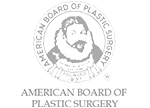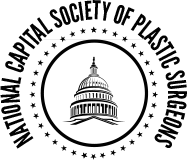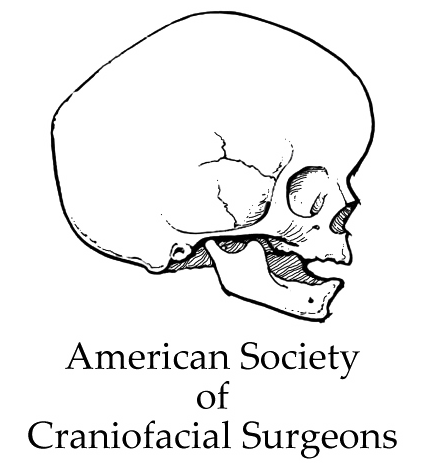Pediatric Facial Deformity
The birth of your new baby is one of the most special events in your life. Welcoming the newest member of your family to the world can be a beautiful, happy and exciting time.
However when your new baby is diagnosed with anything other than perfect health, it is easy to become concerned and stressed. If your baby has a facial deformity, the consultation of a craniofacial plastic surgeon may be requested. This could include conditions such as:
- Cleft lip and palate
- Eye deformity
- Nose deformity
- Small jaw or micrognathia
- Obstructive apnea or respiratory difficulty
- Complex syndromes such as Pierre Robin Sequence, Treacher Collins Syndrome, Apert Syndrome, Crouzon Syndrome, Hypertelorism, Frontonasal Dysplasia
Dr. Christopher C. Chang is a highly trained, board-certified plastic surgeon, serving the Washington, D.C. area and specializing in the face. Among other impressive credentials from Harvard, Yale, and NYU School of Medicine, he completed a fellowship in advanced craniofacial surgery for children and adults at Johns Hopkins Hospital/University of Maryland Shock Trauma Center. He is an active member of the American Cleft and Craniofacial Association and is part of the INOVA Children’s Craniofacial Team. If your child needs evaluation by a pediatric craniofacial plastic surgeon, you can have confidence in Dr. Chang to provide the highest level of care for your child.
Facial Development
The face begins to form early in fetal development the first few weeks after conception. The mouth, eyes, nose and brain are all moving and folding together in a complex orchestrated sequence. When certain parts do not develop properly, other nearby structures may be deformed as well. Genetic aberrations, chromosome anomalies or spontaneous events may be the cause for these problems.
While there are some factors that are clearly linked to increased risk for deformity, even proper prenatal care, screening and imaging may not eliminate the chance of having a child with facial deformity.
Pierre Robin Sequence

One of the most common congenital facial skeletal problems are jaw deformity. This can result in a small jaw, or micrognathia. Micrognathia can be an isolated concern, but often is associated with additional problems. The mandible anatomy is closely tied to the teeth, tongue, palate and throat. Commonly, we can see problems in all of these areas, in a constellation of features known as Pierre Robin Sequence. These children have a small lower jaw, tongue collapse and breathing difficulty which can be life threatening. Pierre Robin Sequence babies can be completely normal other than the facial anomalies, or they may have more complex genetic syndromes that affect other parts of their body.
Treatment options for Pediatric Obstructive Apnea
One of the most concerning features of Pierre Robin Sequence or any facial deformity is breathing difficulty. If your newborn or child has grunting, gasping, snoring or difficulty feeding, it is possible their throat is too crowded to move air and food easily.
Option 1: Tracheostomy
In this procedure, the obstruction in the mouth is bypassed by placing a tube directly in the neck to the windpipe. This allows air to flow easily and is the traditional way to secure the airway for a baby who cannot breathe. While this can be a very successful and common technique, this option is complex, can have serious disadvantages and the child may need the tracheostomy tube for many years until they have grown large enough for removal.
Option 2: Tongue-lip Adhesion (TLA)
This procedure is performed by pulling the tongue forward and suturing it to the lower lip. This method attempts to correct the obstruction by pulling it open. In certain cases, TLA can be successful, but the moisture of the mouth can increase the risk for healing problems, delayed tooth eruption and prolonged oxygen requirements until the child has grown significantly.
Option 3: Mandibular distraction
Mandibular distraction is a technique to advance the small jaw forward into the proper position and relieve the skeletal deformity. The bone is cut carefully and a small device is placed, similar to an orthodontic palate expander. The bone is then slowly separated while the cut is healing – this allows bone cells to grow in the gap and eventually form strong, stable bone. The treatment course is usually 3 months until the bone is stable enough to remove the distractors, although the benefits of mandible advancement can be seen immediately. The biggest risks of this procedure are that it is a more involved surgery, should only be performed by a surgeon with significant experience and comfort with jaw surgery and with any implant or hardware, there is a possibility of hardware failure.
Unlike the other options, mandible distraction has the secondary benefit of opening the posterior pharynx, allowing easier swallowing and avoiding the need for a surgical feeding tube to be placed in the abdominal wall.
Dr. Chang is a craniofacial plastic surgeon who has a particular interest in pediatric sleep apnea and facial deformity. He is one of the DC area’s specialists in craniofacial distraction osteogenesis (Pierre Robin Sequence), and frontofacial surgery. When searching for a surgeon, you need a doctor who can explain the treatment options, offer the full range of services, and help you make the right decision for your family. You also need a physician you can trust. Dr. Chang can evaluate your child’s condition, explain the different procedures, treatment timeline and answer any questions you may have.
Phone: (888) 413-3923 Hours: M-F 9:00am to 5:00pm



Recent Reviews
"I have never felt so confident. Dr. Chang completely changed how I saw myself in the mirror. I was terribly self conscious of my nose from my youth and finally decided to go through with the surgery. Not only was it inexpensive compared to the other three doctors I contacted, the before and after pictures of patients were also much better looking than the others! The whole process of surgery and recovery was quick and pretty much painless. I would definitely recommend him to anyone wanting cosmetic surgery. It really made me a happier person." - Catherine M.
"My son was in a terrible accident with most of the bones in his face and skull broken... I don't know what I would have done without Dr Chang!! My son is fully recovered and back to his old self again. I love Dr Chang, he will be in my prayers for the rest of my life. Thank you!" - Elizabeth A.
"I cannot say enough about my surgery with Dr. Chang! I had full facial Rejuvenation including a facelift brow lift and upper eyelids done 4 months ago. I also had a chemical peel to my lower eyelids and mouth. They was barely any pain and I was back to work the next week! I am so thrilled and my friends are so impressed. I cannot say enough about my experience! He is both caring and an amazing surgeon! Thank you so much!" - Cathy W.
The entire experience and outcome was everything I hoped for and I cannot thank Dr. Chang enough! He is a true pro and I recommend 100% without reservation!" - Ashley R.
"I went to Dr. Chang to correct the damage done to my breasts from pregnancy and breastfeeding. He went above and beyond to make me comfortable and to explain exactly what the procedures (lift + implants) would entail. He was extremely responsive and truly understood the look that I was trying to achieve - full, natural for my frame, and with minimal scarring. I'm only two days out from surgery and I'm already loving my results. I am so glad that I chose Dr. Chang to restore my chest to its pre-baby appearance. I actually think they are going to be better than they ever were before I had kids!" - Emily L.






